Yesterday, Valve announced several different devices: a new controller, a new VR headset (dubbed the Steam Frame) and a fully realized version of the Steam Machine. And while I’m going to need to actually have these things in my hands and on my head to be sure, I’m reading over the specs and mostly nodding while saying, “Oh, that’s quite good.” Valve made a bunch of smart hardware choices, some of which I’ve wanted someone to make forever, and others which I never would have thought of. While I haven’t had a chance to have a hands-on with this hardware, I am fervently excited for everything I’ve seen.
The Steam Controller, vindicated
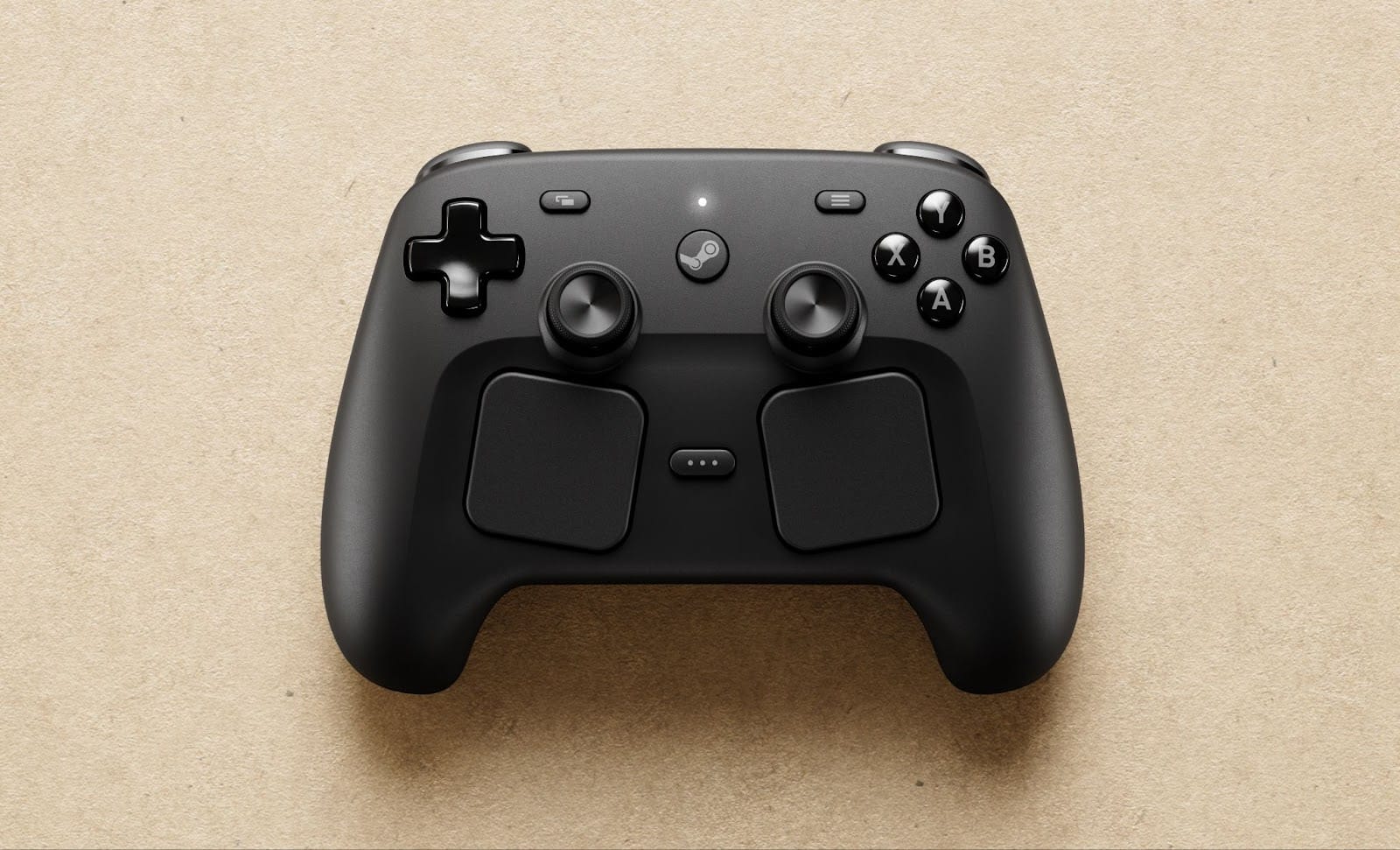
There are some people out there who never forgot the Steam Controller. Wonky and ambitious, with two big touchpads, it did not hit with everyone, but the people it did strike a cord with hoarded them when it went on clearance and held on to them like doomsday preppers. Though the controller was not a hit, you see the DNA of what it did in other peripherals. An entire cottage industry of DIYers use similar Cirque touchpad modules used in that controller in their keyboards to approximate mousing – the Dilemma, Harite and Daedalus, just to name a few. More importantly, you see it in the dual haptic touchpads of the Steam Deck. You really only come to appreciate using them when attempting to type with them, which feel organically not unlike typing on a phone.
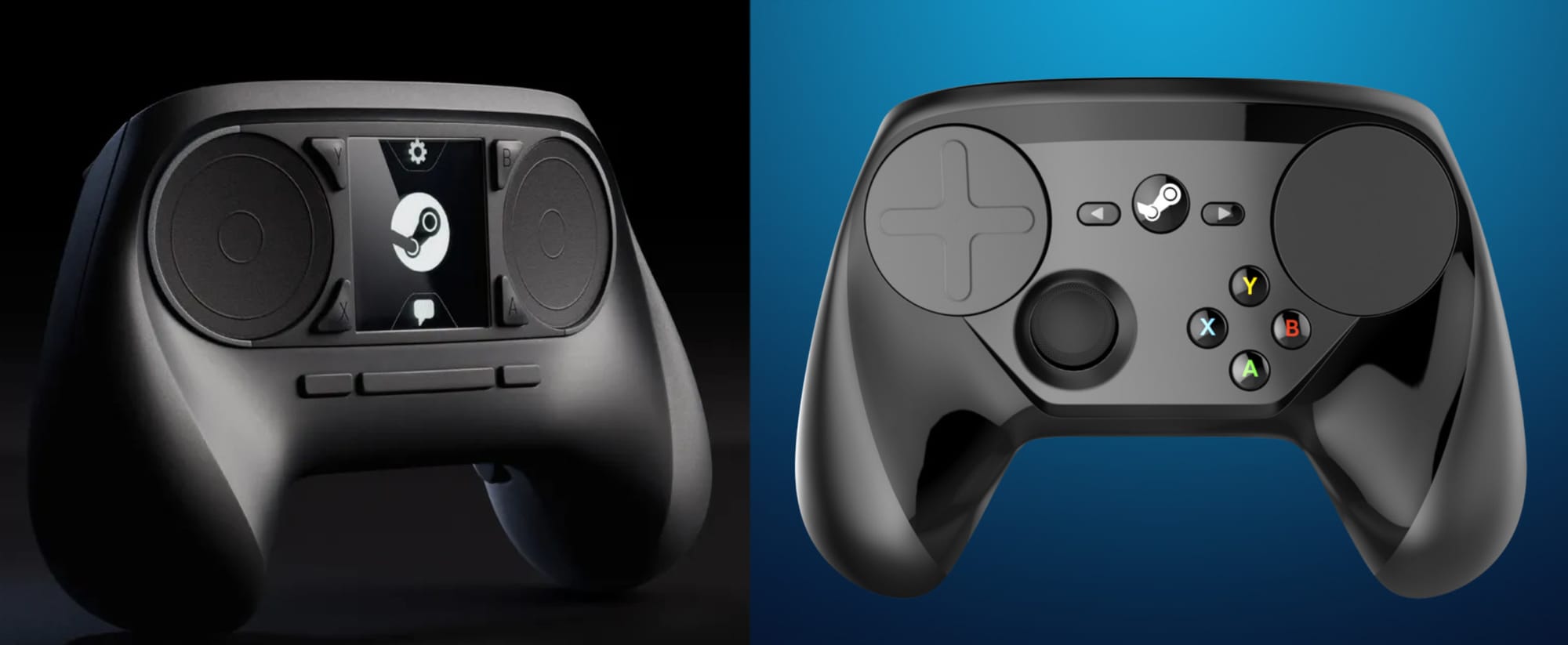
The layout of the new controller mirrors that of the Steam Deck. It has symmetrical sticks like the Deck and the PlayStation controller, which is God’s Correct Layout no matter how many asymmetrical Xbox controller layouts I see in the market. Mercifully, it has TMR sticks, which no first party controller has yet. TMR sticks have become the cutting edge standard in basically every good third-party controller coming out of China. TMR modules are lower energy than Hall Effect modules, which came into vogue a few years back following various stick drift scandals. Though I appreciate that stick drift forced people to get far more inventive and adept at DIY, I’m glad that someone is finally just shipping a controller that I don’t, ideally, have to tear apart later.
The Steam Controller also features a combination wireless dongle/magnetic charger Valve is calling the “Steam Controller Puck,” and whoever thought of that deserves a raise. It has a grip sensor Valve dubs “Grip Sense,” which is intended to be used to enable and disable gyroscopic controls, but Valve says it can be mapped like any other button. As a person who loved the rear touch pad on the PS Vita, I love when a company throws something freaky back there.
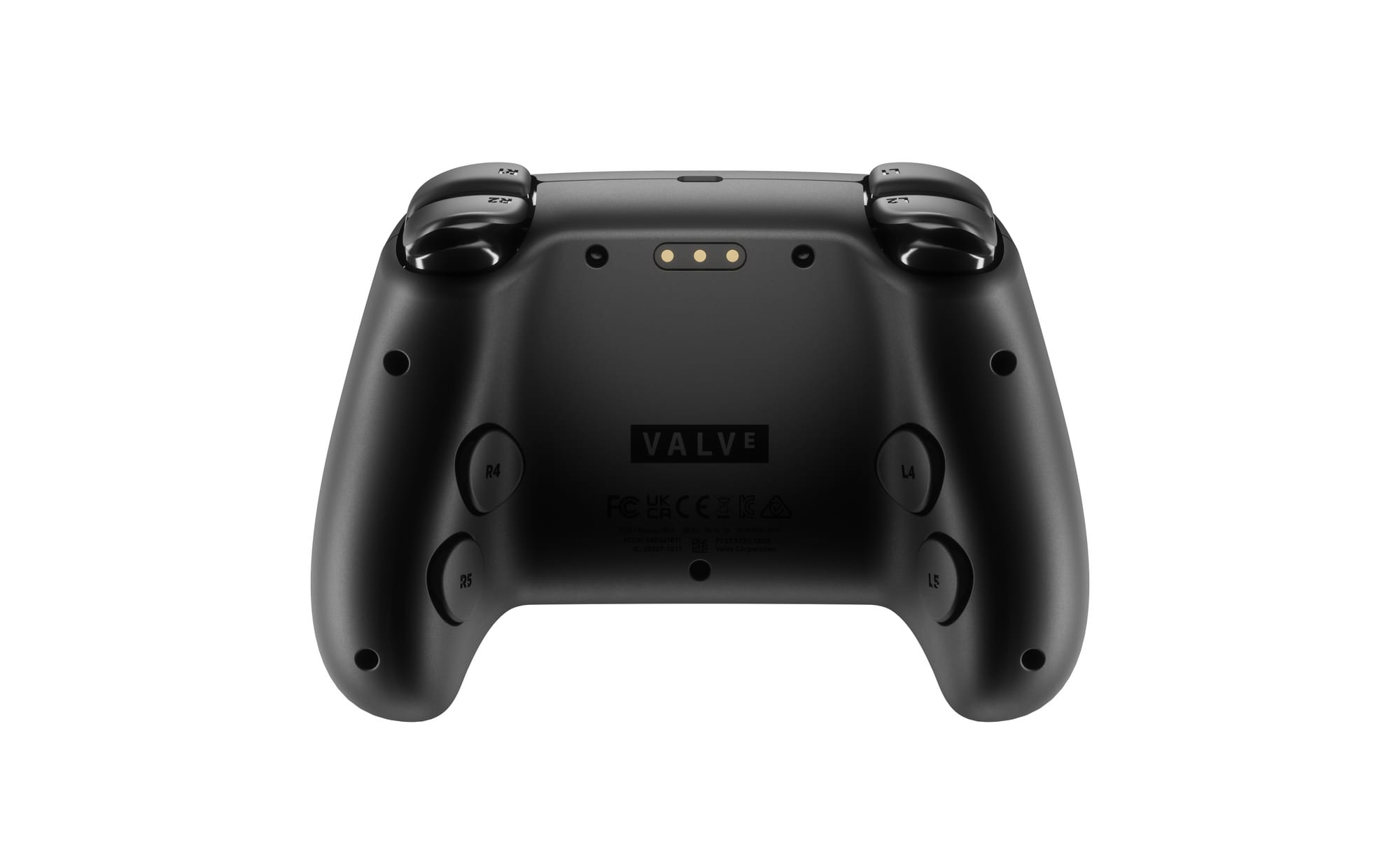
I can’t wait to test the latency on this thing, but superficially this all looks great to me, although I would need to actually see how everything fits into my hand. I’m curious if Valve has considered any other input devices for couch-based control, because I currently have a media PC connected to my TV and you would be shocked at how anemic the marketplace is for lapboards and keyboards with integrated touchpads. This dovetails nicely with Valve’s biggest announcement for the day: the Steam Machine.
The Steam Machine is just a little guy and it’s his birthday
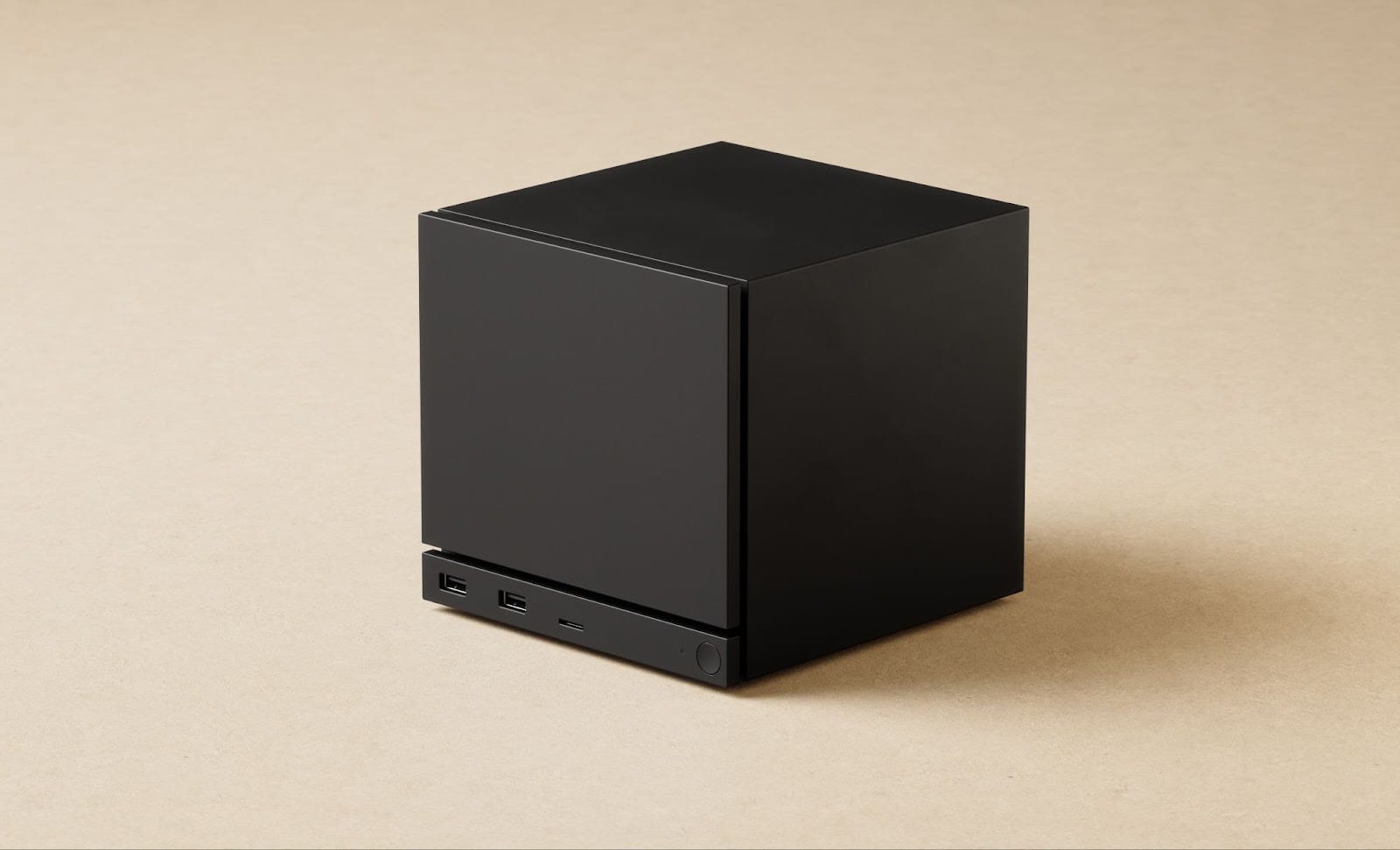
Under my TV, there’s a small form factor PC that I built sometime before covid. It is not the fastest machine in my house– it squeaks along with a 2080 Super–but it covers a shocking amount of my Steam Library and plays video files off my local server, which is enough. For everything else, I have Moonlight streaming and wired Ethernet.
What Valve announced with the Steam Machine is, spiritually, the successor to a debacle that happened over a decade ago and also my weird living room PC. According to Valve, the Steam Machine’s design was a response to a significant number of people using their Steam Deck docked most of the time. The Steam Machine is not a powerhouse, but looking at the specs it has just enough power to play a fairly huge swath of my library. It appears to be aimed towards affordability, and while Valve hasn’t announced a price yet, this is a good sign given how everything is getting more expensive for exceedingly avoidable and incoherent reasons. I do not expect it to compete with either Nintendo or Sony in terms of sheer simplicity of use; the Switch and the PS5 just work and that’s a huge selling point. But it’s a more coherent version of what Microsoft seems to be pushing on every single level, which is more than enough to justify its existence.
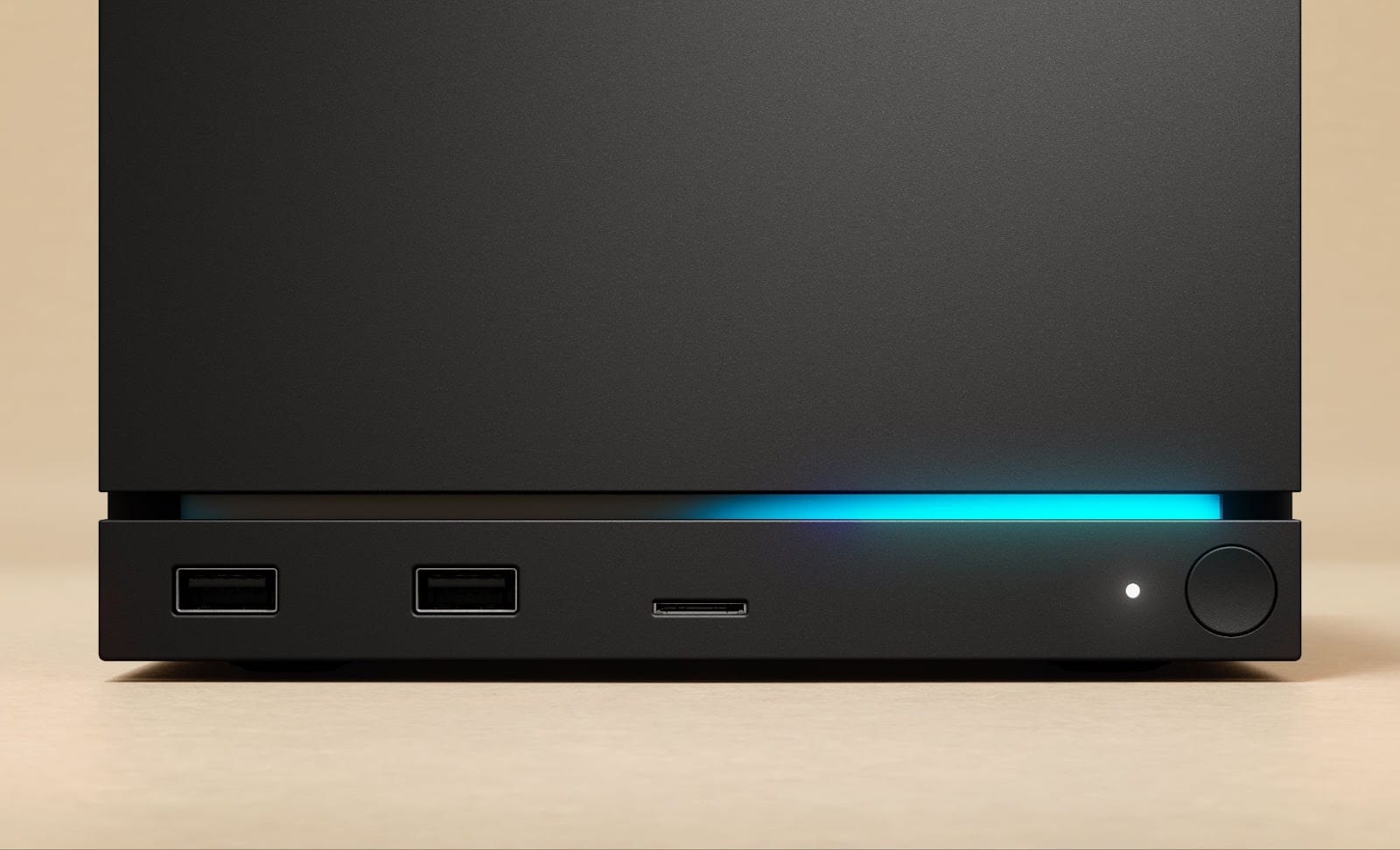
I need to express my adoration for the design of this thing being just a simple, fairly small cube. I have a PlayStation 5 next to my media PC and it languishes like an ugly Roman emperor being fed grapes on a lectus. Despite several revisions, the PS5 still looks like that. It is an inefficient use of space and I live in an apartment in New York City, so I’m paying rent monthly for that guy. Meanwhile, the Steam Machine is just an unassuming box that plays games, with a design that’s as spartan as the Slim PS2 and the Gamecube.
The device also has an SD card slot, making it so that you can just drop an SD card from your Steam Deck into your Steam Machine seamlessly. The front panel is magnetic and swappable, and Valve is actually sharing the 3D files so that tinkerers can go nuts making custom front panels. Leaning into something that your fanbase was going to do anyway is smart and allows for an ecosystem to flourish. The conclusion that everyone has come to is that it’s going to take less than 24 hours for someone to spray paint it atomic purple and throw a handle on it, thus turning into a Gamecube or, as many people have dubbed it, a “Gabecube.”
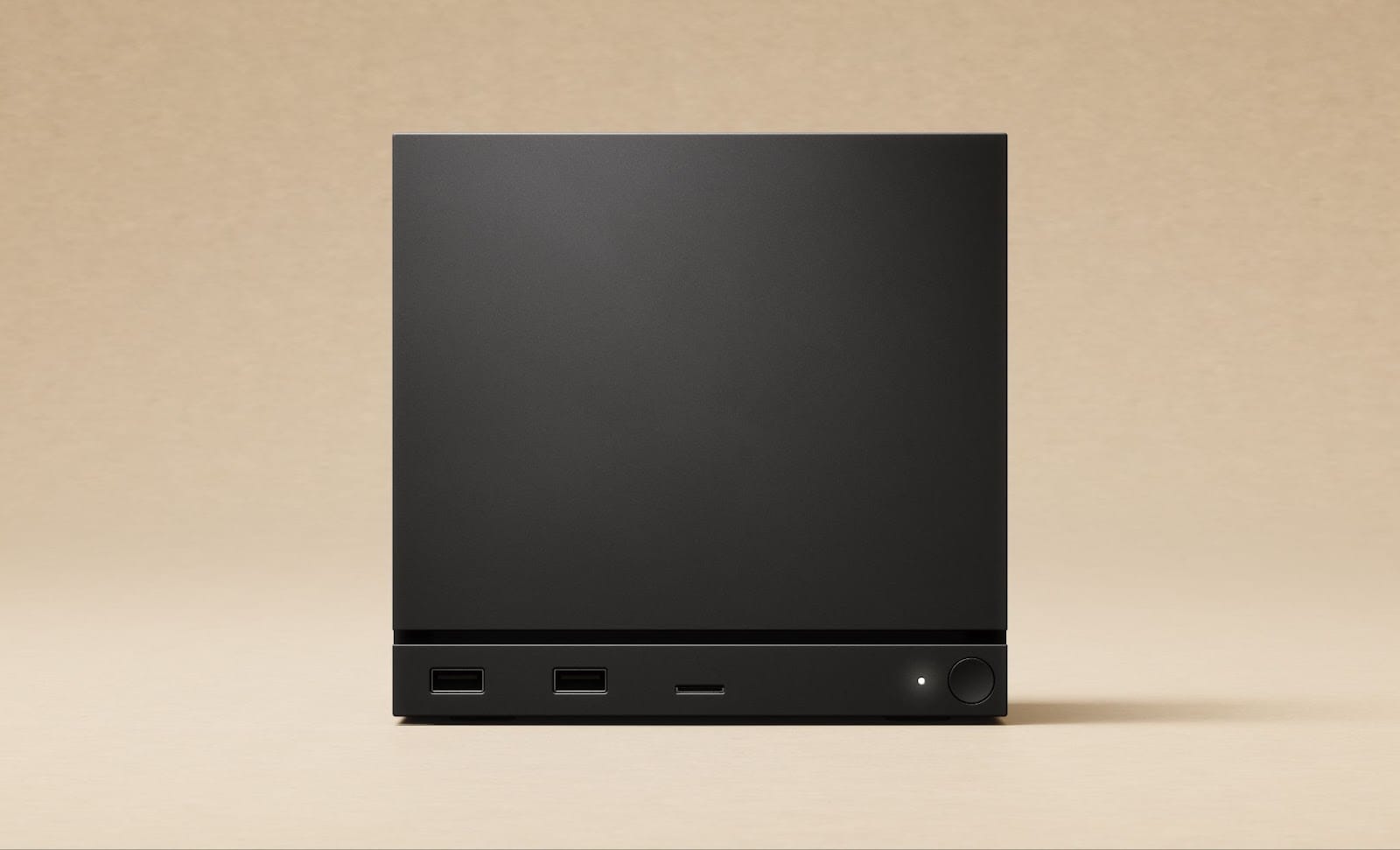
I think it is debatable to say that the Steam Machine is a “console,” but the reality is that consoles have just been PCs with child safety locks on them for a very long time now. I am ancient enough to remember when you could run Linux on the PS2. XBMC, which would eventually become Kodi, started off as a homebrew app that you would run on a hacked Xbox. Further dating myself, I remember someone doing this exact thing in my college dorm in like 2005. I also remember the obscene lengths that people took to make homebrew stuff run on Vita and Nintendo DS. I fundamentally believe that if you own a computer you’re its boss and should be able to modify it as you see fit. A tiny, standardized living room PC that starts with this mentality has always been a dream of mine, and I can imagine these little machines having a long life elsewhere in the home as a network device well after they have been replaced by more powerful hardware.
I have seen people raising concerns about the specs, how it is running with only 8GB of VRAM and RDNA 3. But the genius of the Steam Deck was not that it was a powerhouse, but rather that it established an accessible performance baseline and sorted out compatibility issues, which allowed other manufacturers to build on that. If you want a more powerful version of the Steam Machine, they sell those already: they’re called PCs. This is not an option you have with any other platform, and is as solid a counter argument you could craft to basically any critique of its humble performance. I also think it speaks to a much larger reality, which is that there’s a lot of people who have dropped out of the cutting edge of technology. To be a “gamer” in the AAA sense is a dedicated lifestyle and hobby that requires money, and most people just want something that plays the handful of games they like. I constantly see mini PCs coming out of China from companies like Beelink and Minisforum in roughly this volume, and so the potential for the Steam Machine globally could be huge if Valve is smart with how it positions itself.
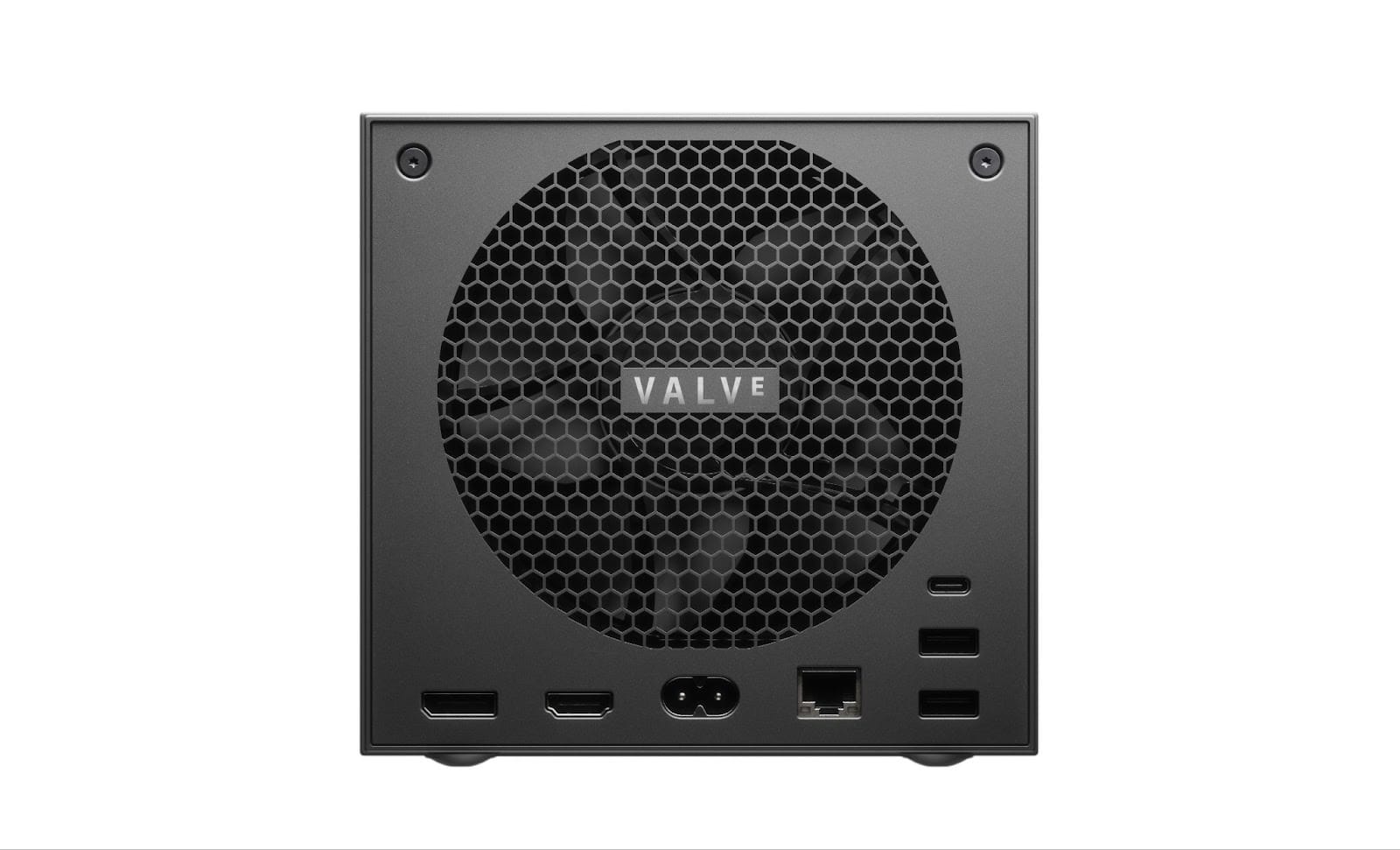
As a media hoarder, I’m also excited at what this potentially means for my people: weirdos who stream old video files and BluRay rips from a NAS in another room of their house. Media PCs have been in a weird limbo for a very long time, and I’m a little hopeful that this could be the device that makes that viable. Outside of the ancient Nvidia Shield, the most solid entry level recommendation is buying something called an Ugoos AM6B+ and following a deeply obtuse set of forum instructions. If that sentence gave you a headache, you now have a good handle on where the media PC landscape is currently at. I also think that, long term, Valve should attempt to make sure that streaming services are as well integrated as possible for people who want a unified device, because “just open up Netflix in a browser window” is not a workable solution even for me, and I’m a freak.
![Post from christian aka @nopoweradeinusa on twitter from December 11th, 2022 Alt text: woman: you said you had netflix? me: this is much better [I open a folder titled “movies” on my computer and the mechanical whirring of an 11 year old SATA hard-drive overwhelms the room entirely] me: have you seen enter the void?](https://aftermath.site/content/images/2025/11/data-src-image-fcf0db1c-23ce-498e-b1b2-19d22dbbd6dc.png)
Steam Frame - Hybrid Moment
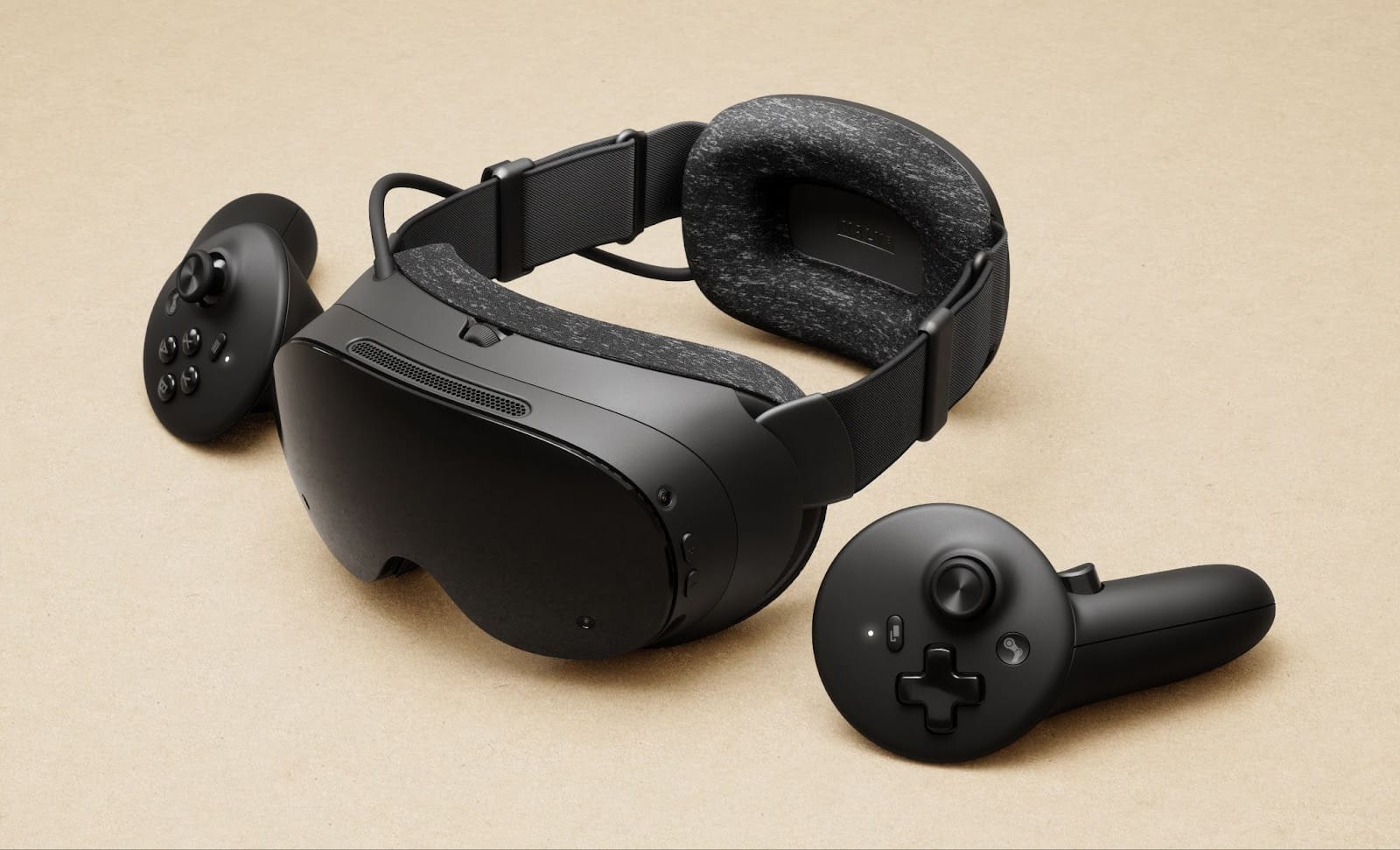
The tech world’s fascination with VR has always felt forced. VR is specifically for four kinds of people: freaks who spend a lot of money on racing and flight sims, furries in VR chat, people who stream Beat Saber, and/or people who want to watch incredibly specific forms of stereoscopic movies and pornography. While I do not doubt the commitment of people who work on the devices, the high level vision from leadership at Meta and Apple has always felt obscenely half-baked: a version of Snow Crash for people who communicate with family members mainly via LinkedIn. No matter how good the Meta Quest or Apple Vision Pro become, I cannot see myself owning either of them. Meta is one of the most evil companies on the planet and regularly spends criminal amounts of money, talent, and R&D just so Zuck can get on stage and look like a dipshit. Apple’s intended use cases for the Vision Pro are obtuse, confusing, and wildly expensive, which is why I have never seen a single person interact with a Vision Pro in an Apple store even accidentally.
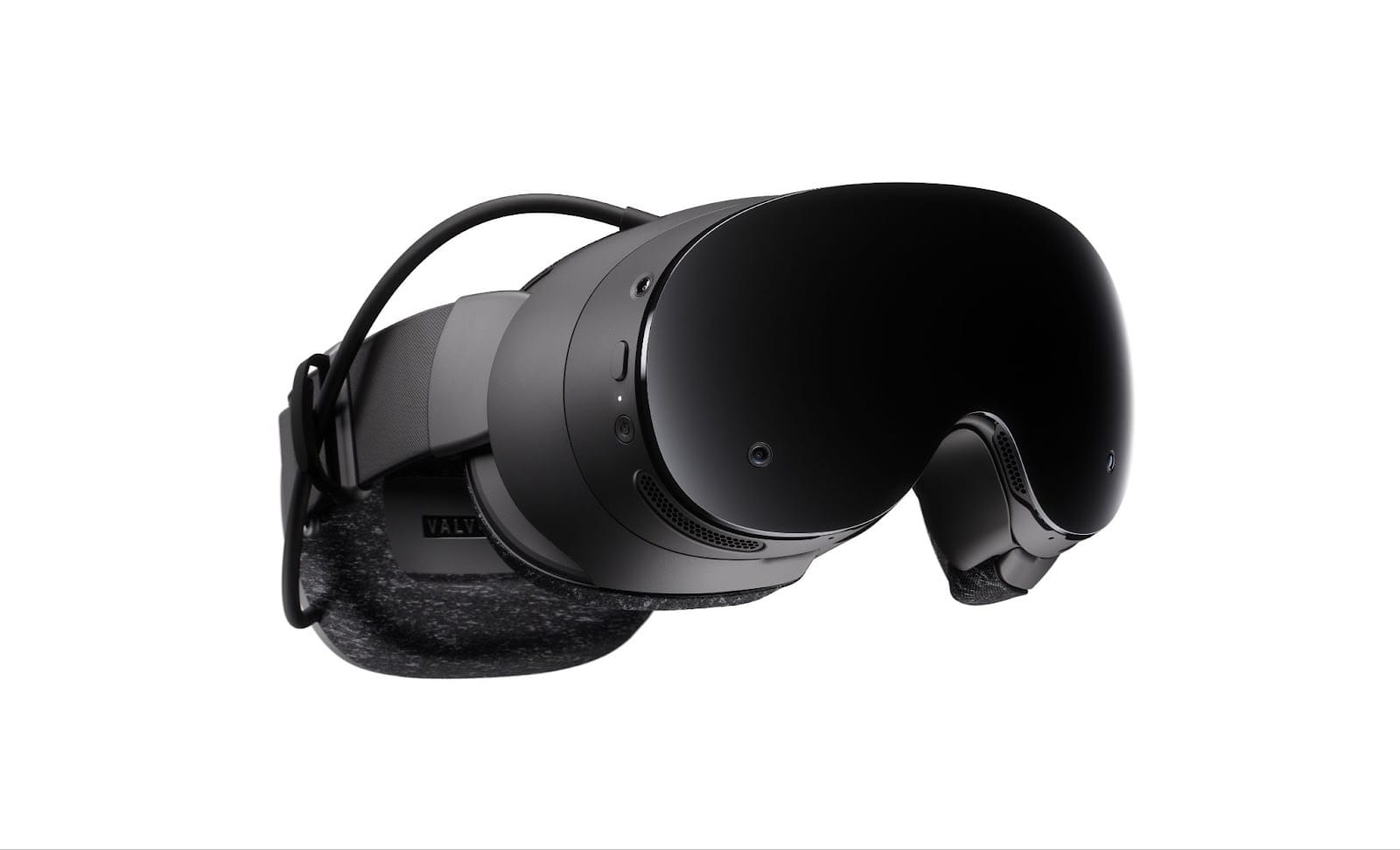
The original Valve Index understood its audience and is, to this day, a beautifully engineered piece of technology. I own one, and while it has definitely shown its age, the hardware choices it made are still impressive. It utilized an array mic that sounds so good that you could legitimately podcast from it. The dual floating BMR drivers worked well and allowed for immersion without closing you off to the outside world. It was the first VR device that made me not want to barf, and the level of care put into it was the thing that made me realize that Valve was taking hardware seriously and inventively, which it then proceeded to do with the Steam Deck.
Like their previous offering, the Steam Frame is also a fascinating piece of hardware. It is very clearly gunning for the Meta Quest 3, which has cemented itself as the go-to recommendation for most people interested in a VR headset. It is primarily intended to be run as a streaming device from a PC, but unlike the Index it instead utilizes a 6GHz dongle for extremely low latency, although you can technically use WiFi as a fallback like the Meta Quest does. It has a standalone ARM-based processor like the Meta Quest, but unlike the Quest it is meant to be usable with your Steam library – both as a streaming device and standalone on the headset itself.

In order to make this work, they are using FEX to emulate x86 programs in an ARM environment. I cannot stress how smart a move this could potentially be, even if you do not care about VR. It has long been speculated that Valve was going after ARM-based devices, but trying to figure out the best way to make that compatibility work is quite complicated. By making the Steam Frame primarily a PC accessory with a fallback for emulated ARM-based gaming, they have created an ideal testbed for ARM-based devices in the future. If a single game does not work well locally on-device, that does not diminish the purpose of the device as a streaming headset. I regularly follow ARM-based handhelds, and the progress I have seen people making with emulation on ARM devices has been fairly substantial. This is what I like so much about Valve’s hardware design philosophy: even if a piece of hardware is not feature complete at launch, the process of getting it to work is often a stepping stone to a much larger and more important thing down the line.
The entire thing is also modular in its design, which I frankly love. The front of the device with the compute module comes off, so implicitly the idea is that you could theoretically upgrade the entire device by just swapping that part out. It also has an SD card slot, which means you can swap the card from your Steam Deck right into it, just like how the Steam Machine works. The Steam Frame is also using something Valve calls Foveated Streaming, itself an iteration on the idea of Foveated rendering, which uses eye tracking to prioritize the image directly where the player is looking. I would need to see how this works in practice, but all of this sounds killer. I rarely get excited for VR, and yet.
Gunning for Microsoft
I would not be as excited as I am for any of this hardware were things not so dire with Microsoft, both as a console maker and someone who makes OSes. Microsoft has repeatedly shot itself in the foot on both fronts, and the questions “what is an Xbox?” and “what is Windows?” fill me with nothing but dread. We have long needed someone to provide a simple, affordable, Linux desktop machine that just works for normal people. Valve seems to be positioning itself in a very smart way on multiple fronts. They are making moves that could not just have long term ramifications for the console space, but for computers generally. And while we will need to see pricing and performance of this hardware in the wild, I have a good feeling about where it could lead. They did a bunch of stuff I wanted someone, anyone, to do for decades, and I have a gut feeling the consequences could be bigger than any of us could imagine.


